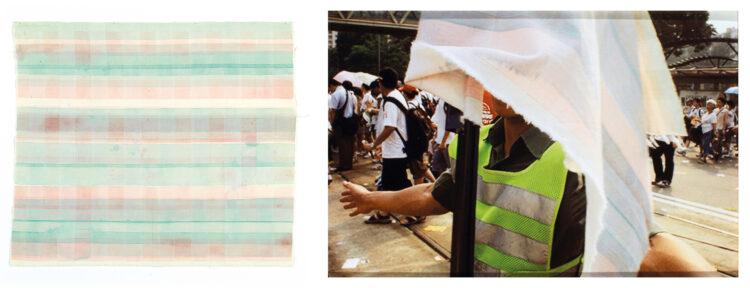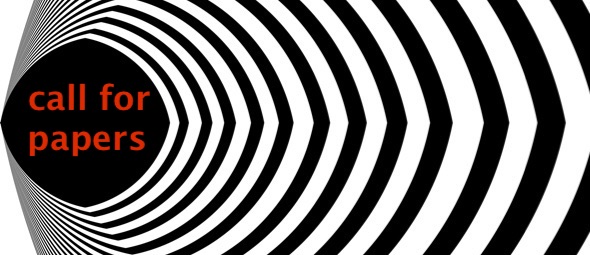Managing Editors: Isabelle Sully and Eloise Sweetman
Deadline for proposals: CLOSED

Health and safety has long been a terrain of conflict within arts practice, with lines drawn in the sand between artistic autonomy and administrative requirement, or between valuing experimentation and avoiding standardisation. Yet how might we begin to think of these binaries differently? What role could ‘risk assessment’—the Occupational Health and Safety practice of identifying hazards and implementing protocol to prevent their materialisation—play in formulating safer working models?
While there is this romantic idea of the artist as a lone worker in their studio, through their work (the running of a sole proprietorship, as often declared to governments and tax authorities) artists of course employ a vast array of workers on a daily basis and work in a way that is ultimately oriented towards public encounter. Yet in wanting to protect the sanctity of the artwork, it seems that most artists have sought to steer well and truly clear of any operational modes that might look even remotely like business. For this issue of Kunstlicht, we’re not interested in any moralisms of this sort. Instead, we want to learn about the ways in which artists, institutions and their affiliated temporary workers are thinking of themselves as responsible to certain codes of safe practice, to audiences and to each other.
We want to know what the different definitions of ‘safe’ and ‘risk’ are that are being worked with. And how we might come to a mutual and workable understanding of these two terms across so many different agendas and personal experiences and needs. In this way, we encourage proposals that depart from the current focus on care and instead move towards the more equalising base of safety, as implemented within the practices of both artists and institutions. Artist Carolyn Lazard’s recent publication Accessibility in the Arts: A Promise and Practice comes to mind here, as a tool that provides information to small-scale arts organisations around possible accessibility measures for diversely-abled audience members.
But aside from more general profession-wide or institutional approaches, we also want to know what actual personal approaches are being taken up within artistic practices to address risk assessment and its management, however specific and mundane. For example, is an adaptable or multi-role practice a form of risk prevention or it is just simply selling out? Here we think of interwar artist Katarzyna Kobro, who allegedly made commercially oriented sculpture to offset the cost of her experimental work. Or alternatively, of the risks contemporary Hong Kong artist Lee Kit takes into account with his hand painted textiles, which adapt when needed from painting to picnic blanket or protest banner to commodity. Or of collaborative duo Christopher D’Arcangelo and Peter Nadin, who together conducted renovations-as-artworks to generate at least some form of remuneration.
So let’s be real. For many reasons, not everyone can take risks. Art can be a dangerous place to be. It can be ableist, racist, homophobic, misogynist and ecologically damaging. And, if you manage to navigate all these things, the luxury of prioritising experimentation within practice is also not something afforded to everyone. In what ways are we forced to take risks because of a lack of structure or provisions (perhaps ones taken as givens in other fields)? And when it comes to the active management of risk, what kinds of organisations or formations are being lent on for support? For example, in the context of the Netherlands self-organised solidarity programs like Broodfonds (a substitute sick pay initiative for freelance workers) exist as examples of ways to protect against risk outside of bureaucratisation, contract-driven private companies and government reach. In following similar paths, how could we learn from approaches outside the field of art and, say, institute other protection measures, like forming employee-organised safety bodies such as Designated Work Groups (DWG), within our immediate circles? Here, we are also seeking proposals from the perspective of organisations or individuals in other fields that have concrete ways of working with risk assessment and the hurdles that come up in the process.
With all these realities in mind, this issue of Kunstlicht ultimately wants to know how we are addressing safety in our work, and how collectively. Because in the end, is the age-old adage that good art is ‘risky’ and bad art is ‘safe’ really serving us when it comes to the question of best (artistic) practice and the desire to sustain ourselves as workers?
We want to note that we understand this topic has clear links to the current global crises surrounding COVID-19. However, we are not only thinking of the question of risk assessment in light of the pandemic. We are interested in finding ways to address the question of safer practice across the different axes of both presentation and production.
Proposals (200-300 words) with attached resumes can be submitted until August 10th 2020 via redactie@tijdschriftkunstlicht.nl. Selected authors will be invited to write a 2000–3000-word paper (excluding footnotes). However, that said, we are open to other experimental approaches within the black-and-white printed format.
Unfortunately, as the journal is unfunded and has been completely volunteer-run from top to bottom since its beginning, Kunstlicht is not able to provide an author’s honorarium. Authors who publish in Kunstlicht will receive three complimentary copies. Two articles will be selected to be available online. Two years following publication, papers will be submitted to the freely accessible online archive. The editorial board reserves the right to decline contributions.
Isabelle Sully is an artist and writer, often taking the materiality and mechanisms of administration as her focus. She is the founding editor of Unbidden Tongues, an imprint of Publication Studio Rotterdam, and assistant curator at Kunstverein, Amsterdam.
Eloise Sweetman is a curator, artist, writer, and teacher. A common thread in her practice is to deliberately engage in hospitality and reconcile the responsibility of putting exhibitions, artworks, texts, talks and events into the world. In 2018, she co-founded Shimmer, an exhibition, events and online platform in the port of Rotterdam.
Kunstlicht is an academic journal for visual art, visual culture, and architecture, founded in 1980. It is affiliated with the Arts & Culture department of the Vrije Universiteit Amsterdam, but operates from an independent foundation. Kunstlicht is published three times a year, and features both scholarly and artistic contributions.
[1] ‘In his series of hand-painted cloths, Lee Kit explores the fluidity of objects as they move between domestic environments and public spaces. The pieces of fabric, painted over with softly colored stripes, plaids, hatching, and other patterns, serve a variety of functions. Exhibited first as wall-hung paintings, the cloths were then appropriated as functional objects in the aftermath of the SARS epidemic in 2003. After weeks of indoor seclusion, Lee and his friends decided to hold an outdoor picnic during which they used one of the cloths as a picnic blanket. Since then, some of Lee’s hand-painted cloths have been assimilated into domestic environments as washcloths, towels, curtains, and bed sheets, while others have been integrated into public and communal settings as café tablecloths. One of the cloths even served as an impromptu banner in Hong Kong’s annual July 1 protest in 2004.’ Stephanie Hsu, ‘Report on Lee Kit,’ Asia Art Archive in America, February 2012, http://www.aaa-a.org/programs/a-report-on-lee-kit/.

